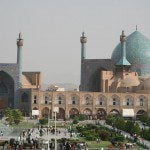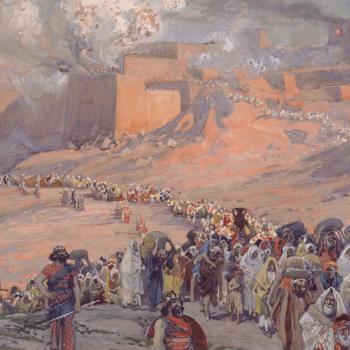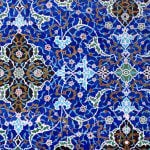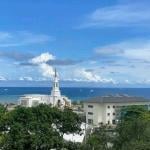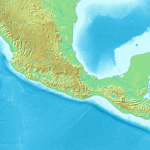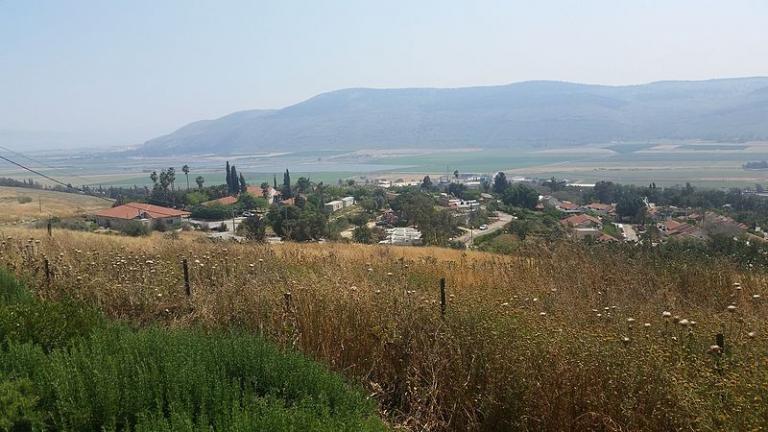
(Wikimedia Commons public domain photograph)
In time, the Turkish overlords of the Arab world lost their grip on power. In 1220, the Mongols poured out of the steppes of central Asia and began the process of substantially destroying the central lands of Islam. The irrigation canals of the Iranian plateau, on which the rulers of Persia had lavished attention and money for centuries, were severely damaged if not utterly destroyed. The area received a blow from which it never fully recovered. These Mongol invaders were great horsemen, highly mobile, who had perfected the art of shooting arrows from horseback at great speeds. Needless to say, this was extremely effective in combat. But I have long thought that the real secret of their success came from their attitude to water. Medieval sources report that the Mongols considered water so sacred that they refused to soil it by bathing in it. Instead, they anointed themselves in horse butter. Now, imagine. After, say, thirty years of horse butter anointings, the typical Mongol of the thirteenth century must have been a fairly potent individual. (All a Mongol army had to do was to get upwind of a town. The place was almost certain to surrender.)
In 1258, the Mongol armies overwhelmed and obliterated Baghdad. Out of respect for the high office of the caliph, however, they did not subject him to the kind of death they had imposed on tens of thousands of others. Instead, they wrapped him up in a Persian carpet and trampled him to death with their horses. (I hope that he appreciated the honor.) Thus perished the greatest Muslim city of the High Caliphal period. It has never really recovered. The prospects of recovery seemed dim under Saddam Hussein and the Baathists and, now, amidst the continual violence that has followed the toppling of Saddam’s regime, they haven’t improved very much.
Finally, in 1260, the Mamluks of Egypt stopped the Mongol military advance at a place called Ayn Jalut[1], in Palestine. This must have been an immense shock to the Mongols. No army or city had ever successfully resisted them before. It required a group of central Asian warriors much like themselves to resist them now. Yet, although the Mamluks never receive any credit for this victory in most world history textbooks, their heroism and effectiveness in putting a stop to the Mongols has to be ranked as one of the crucial battles in human history. The invaders had advanced all the way from China, and there is no telling how far they might have gone had a group of unappreciated Muslims not stopped them in Palestine.
The Late Middle Period, from 1258 to 1500
As is to be expected, Hodgson’s “Late Middle Period” of Islamic history is marked by Mongol dominance. The problem of political fragmentation was still there, as was the problem of the military elite controlling a population whose language and culture they never fully grasped. But the identity of the foreign ruling class had changed. The Turks who dominated the Early Middle Period were now replaced in many areas (though, importantly, not in all) by Mongols.
Like the Crusaders before them, the Mongols were intruders who encountered a vastly superior civilization. Soon, they were smitten by it—that is, with the portion that they themselves had not smitten—and began to take on Islamic ways. Indeed, the Mongols who settled in the Islamic world actually converted to the religion of Muhammad. Like the other regimes of the Middle Periods, the Mongols richly patronized the arts. (Hodgson calls these “military-patronage states.”) The maidens looking out from the miniature paintings of this new era have pale, round faces, with almond eyes—the Mongol ideal of beauty. But, in keeping with the spirit or the demon of the age, the new conquerors could not maintain unity. Several Mongol empires resulted, including the White Horde, the Golden Horde, the Il-Khanid empire, and the Chaghatay empire. These were, for the most part, in the Persian area of Islam that lay to the East. Thus, they had relatively little direct impact on the Arabs, the children and heirs of Abraham. But our focus is not solely on the Arab world.
In Egypt and Syria, the stock of the Mamluks was definitely on the rise. The desolation of Baghdad in 1258 left Cairo the greatest of Muslim cities. It had been founded only in 969, by the Fatimids, and so was a comparatively new city by Near Eastern standards. (It was built near the old seventh-century Arab military garrison town of Fustat, which was built near an even older Christian settlement. And the capital of the Old Kingdom pharaohs, Memphis, with its great pyramids across the Nile, was not far away. Cairo itself, though, was new.) But the city rose to its new status. A new group of Mamluks, loosely called “Circassians,” from a region in the Caucasus mountains, were passionate builders and patrons of art. The years after 1200 A.D. saw Cairo’s greatest blossoming as a Mamluk city, overflowing with great wealth and lovely architecture.
For all its elegance and appeal, there were factors that would make Circassian blossoming a brief and transitory thing. In the middle of the 14th century, the Black Death swept through the Near East, killing hundreds of thousands, leaving many cities and towns at a fraction of their former populations. Still, the lavish building programs of the Circassian Mamluks continued. Each sultan attempted to outshine his predecessor in the glory of the mosques he built and in the magnificence of the mausoleum he constructed to be his own final resting place. (Something in the air of Egypt seems to encourage the building of grandiose tombs.) Members of the ruling elite vied with one another in their patronage of architecture. Such efforts required large sums of money, but the economic base of the country was now weaker than before. So the Egyptian regime turned to taxes and to tariffs on trade, desperate for new revenue. But their demands grew so high that European merchants began to seek cheaper ways to do business, ways that would not require them to cross Mamluk domains. When, in 1498, Vasco da Gama found the sea route around the cape of Africa to India, the Egyptian economy took yet another blow.
[1] Pronounced “Ayn Jah-LOOT,” this phrase means “Goliath’s Spring.” In Hebrew, the spring is known as Ein Harod. It was the site not only of the great medieval victory over the Mongols but, many centuries earlier, of the famous story told in Judges 7.
Posted from Park City, Utah



